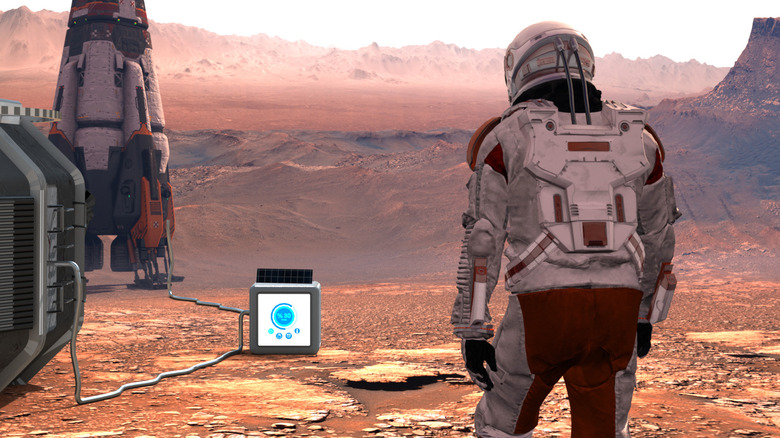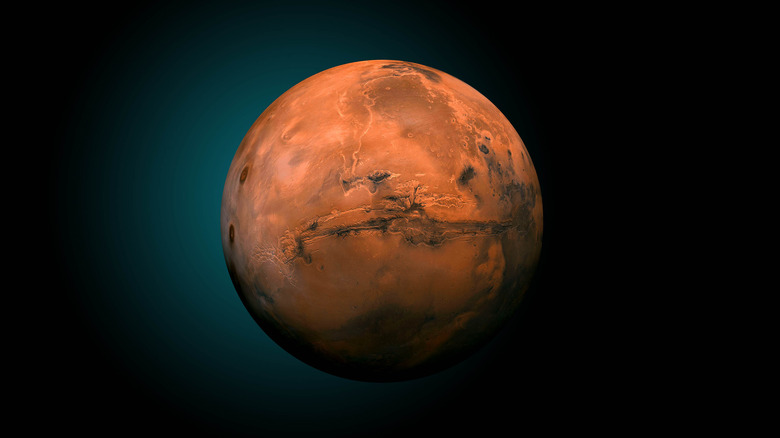ESA Testing Process Of Using Astronaut Waste To Make Fuel On Mars
When it comes to human space exploration, it's difficult to bring along everything astronauts need for a mission — especially if the plan is for a mission to last longer than a few weeks. That's why people planning missions to Mars need to get creative in how they will manage the food, water, and fuel that astronauts would require to visit the red planet. Now, the European Space Agency (ESA) is working on an ingenious (if squeamish) plan to make rocket propellant from astronaut sewage. ESA is working with Spanish research center Tekniker to create a system which uses sunlight and sewage to turn carbon dioxide, which is plentiful in the Martian atmosphere, into methane and other hydrocarbons.
"We aim to make the first reactor to produce space propellant on Mars using the planet's air, which is 95% carbon dioxide," Borja Pozo from Tekniker explained. "The reactor will be powered by sunlight, and astronauts' greywater will be used to help in the production of the propellant." The sewage would help to make the process more efficient, the designers say, as part of a "photoelectrochemical" system. In addition to creating hydrocarbons which can be used as fuel, the system will also detoxify the water, meaning it acts as a recycling system as well as a fuel production system.
Making use of available materials
This kind of system is important to develop if we want to eventually send humans to Mars. That's because Earth and Mars are only close to each other approximately every two years, or 26 months, so it is only really feasible to send missions there during this biannual period. That means a crew would likely have to travel from Earth and spend around 18 months on Mars before they could travel home (via Digital Trends). As such, they would need to be able to survive for an extended period on an alien planet.
The amount of water, oxygen, food, and fuel needed to sustain a crew for that long would be too heavy to launch on a rocket. So a future mission would need to take advantage of the resources which are already available on Mars to make what is needed, an approach called In Situ Resource Utilization (ISRU). Plans like the ones from ESA could help astronauts get by on an eventual mission to Mars, or to other locations like the Moon or elsewhere. "The outcome of this activity could provide ESA with valuable input on the production of propellant on Mars or to power remote sites like ground stations on Earth," said Jean-Christophe Berton, ESA technical officer for the project (via ESA). "It could also potentially provide input on how to decarbonise our own atmosphere."

